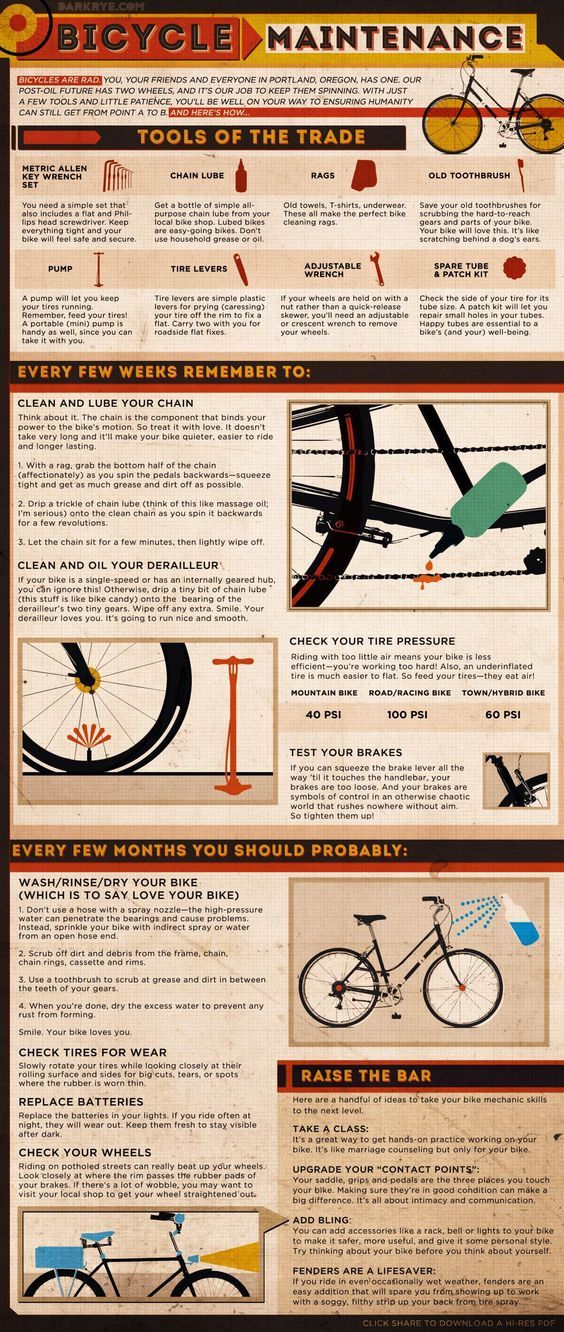For everything you need to know about buying and maintaining tires, click here.
Quick, name the top two safety features on your car, truck, or SUV. Chances are good that tires didn't factor high among the answers. But tires are your vehicle's sole connection to the road. You need to know one of the simplest things you can do to take care of them, so they can take care of you: periodic tire rotation.
"Most drivers don't pay attention to their tires," says Matt Edmonds, executive vice president at the Tire Rack, the largest online marketplace for tire sales in the United States. While tires are his business, Edmonds is under no illusion that tire rotation, a vitally important safety check, is going to get pulses racing.
That's because car tires can seem, well, kind of boring. Most drivers tend not to notice them unless they get a flat. Tires don't have the panache of self-driving technology, the excitement of rubber-burning horsepower, or the feel-good factor of automated emergency braking and blind-spot-monitoring systems.
Too bad, because tire rotation is important when it comes to maintaining the performance and safety of your vehicle. Your tires are, quite literally, where the rubber meets the road, as your tires' contact patches with the pavement are in use during every single drive, in all weather conditions. Well-cared-for tires keep you safe.
Tire Rack
Buy Now
Tire RackTire Rack
Buy Now
Tire RackTire Rack
Buy Now
Tire RackTire Rack
Buy Now
Tire RackDepending on whether the vehicle you're driving is front-, rear-, or all-wheel drive, the tires will wear at different rates. The driven wheels have more work to do and often exhibit quicker rates of wear. A front-wheel-drive car, for example, uses its hard-working front wheels to steer, brake, and put the power down to the pavement (all while carrying the added weight of a front-mounted engine and transaxle).
A front-wheel-drive car, for example, uses its hard-working front wheels to steer, brake, and put the power down to the pavement (all while carrying the added weight of a front-mounted engine and transaxle).
“By rotating your tires, you give the tires a chance to even out their wear and get extended life out of your tires,” Edmonds explains. He recommends having your tires rotated about every 3000 to 5000 miles, or at least every time you go in for an oil change. If your owner's manual states that your car doesn't need new oil that frequently, then plan on a tire rotation at least once every six months.
Rotating your tires evens out the wear and makes them last longer.
Proper rotation not only helps even out wear and extend the life of your tires, it provides the perfect opportunity to make certain all four wheels are in good working order. “As we're coming out of winter and going into spring, it's a good time to inspect the tires' outside and inside shoulder for damage, particularly from potholes,” Edmonds says.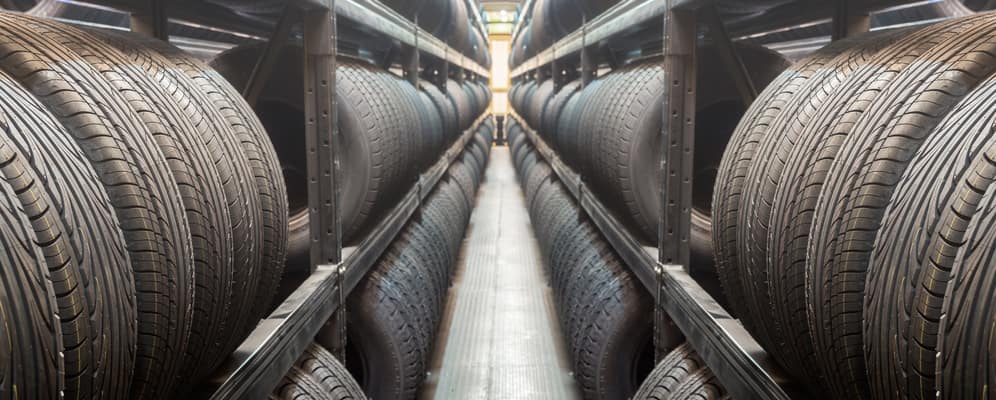 It's also a good time to check the condition of your wheel rims, which can be bent by hard impacts with potholes—sometimes only on the inboard side of the rim, where you can't easily see it.
It's also a good time to check the condition of your wheel rims, which can be bent by hard impacts with potholes—sometimes only on the inboard side of the rim, where you can't easily see it.
Two common tire problems that might surface during an inspection include cupping and blistering of the sidewall.
Getty Images
Tire cupping, Edmonds explains, is more common in older vehicles with suspension systems that are aging and in need of repair. This issue presents itself via uneven wear patterns in the tread, which, if ignored, could significantly affect a vehicle's ride, steering, and braking ability while also wearing out tires prematurely.
A blistered sidewall—literally, a bulge in the sidewall—might result from slamming into a deep pothole. "A tear might occur inside the tire when that tire gets pinched. The air could then get into the structure of the tire, and you get a blister," Edmonds says. If unseen or left undiagnosed, this problem could result in a flat tire or a blowout that could cause a serious accident.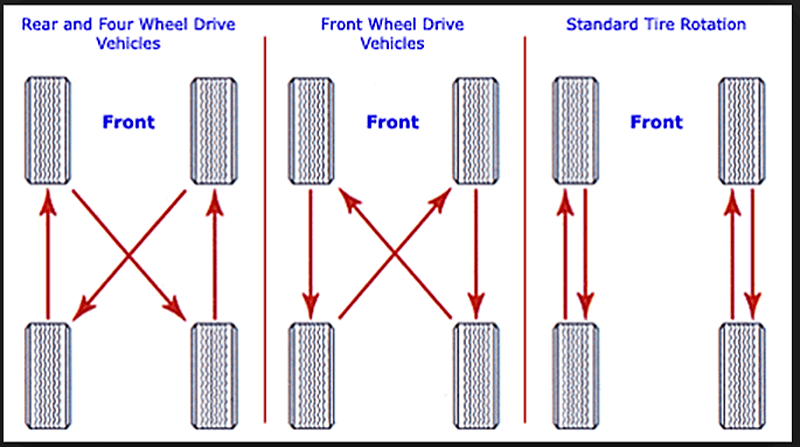 We suffered 10 pothole-related tire failures recently with one of our long-term test cars, a 2017 Jaguar XE, over the course of its 40,000-mile stay, due to Michigan's cratered road surfaces.
We suffered 10 pothole-related tire failures recently with one of our long-term test cars, a 2017 Jaguar XE, over the course of its 40,000-mile stay, due to Michigan's cratered road surfaces.
According to the Tire Industry Association, three tire-rotation patterns cover most of today's vehicles, as long as they are fitted with equal-size tires front and rear and those tires are not unidirectional (meaning they have to rotate in only one direction to function properly).
Rotation pattern for front-drive vehicles: Swap the front tires straight to the rear position on the same side. Take the rear tires and move them to the opposite front corner (e.g., the right rear tire gets moved to the left front).
Getty Images
Rotation pattern for rear-drive vehicles: Move the rear tires straight to the front, then move each front tire to the opposite rear corner (for example, move the right front to the left rear).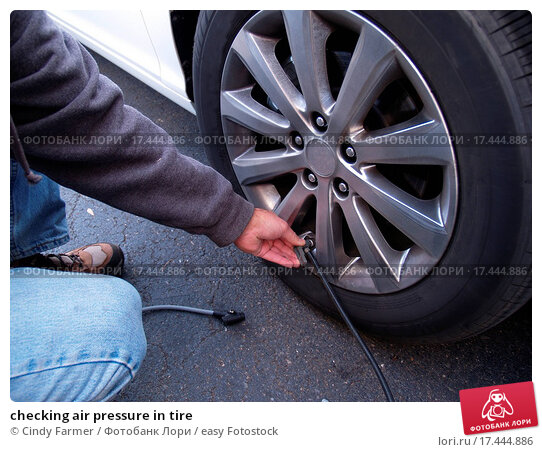
Rotation pattern for all-wheel-drive vehicles: Crisscross all four tires (move the right front to the left rear, the left front to the right rear, the left rear to the right front, and the right rear to the left front).
By the way, rugged-looking SUVs may be all the rage, but having a vehicle with all-wheel drive doesn't mean you're immune to tire-rotation maintenance. "That is a common misconception," says Edmonds, regarding the idea that all-wheel-drive vehicles automatically have tires that wear more evenly. "All-wheel-drive systems don't always drive all the wheels all the time," he explains, adding that transfer cases and electronically controlled differentials can shift power between the front and rear wheels, depending on the conditions and the drive mode that's been selected. And a vehicle's inherent weight difference between the front and rear can also affect tire wear.
Extra attention needs to be paid when it comes to vehicles with different wheel sizes at the front and rear and those fitted with unidirectional tires—tires that are designed to rotate in one direction only. In many cases, this setup is used on high-performance vehicles, and tire-rotation patterns need to be adjusted to suit. In fact, some of these staggered-tire packages, as they are called, cannot be rotated unless the tires are dismounted and then remounted on the opposite-side wheels. In some cases it may not be worth the time, money, or trouble to rotate the tires.
In many cases, this setup is used on high-performance vehicles, and tire-rotation patterns need to be adjusted to suit. In fact, some of these staggered-tire packages, as they are called, cannot be rotated unless the tires are dismounted and then remounted on the opposite-side wheels. In some cases it may not be worth the time, money, or trouble to rotate the tires.
If you have any doubts about correct tire rotation, consult the owner's manual, inquire at a dealership, or talk to an expert who is familiar with your vehicle and its tires. But whatever you do, rotate them if possible. At the very least, it'll help your tires last longer and will save you money.
Now 15% Off
$119 at Amazon
Now 31% Off
$24 at Amazon
$68 at Amazon
$70 at Amazon
This content is imported from OpenWeb. You may be able to find the same content in another format, or you may be able to find more information, at their web site.
You may be able to find the same content in another format, or you may be able to find more information, at their web site.
Tires are one of the most important and ignored parts of a car. Properly maintained wheels keep your vehicle safe and performing well. Most drivers know regular rotations prolong the life of a set of tires, but how often should you rotate your tires? And why does it matter? Here’s how to properly care for your tires so they can take care of you.
Answer: You should rotate your tires every six months or 6,000 to 8,000 miles. Read more here: http://t.co/6aUv9vGOZ6 pic.twitter.com/vu34W11MsH
— Michelin USA (@MichelinUSA) February 7, 2015
When you take your vehicle to the mechanic to rotate the tires, each wheel is taken off the vehicle and moved to a different spot on the car.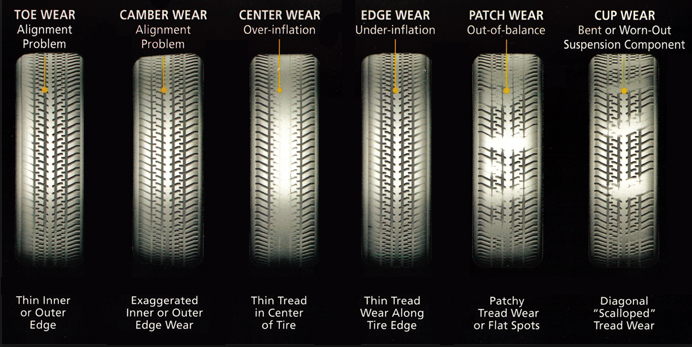 According to Michelin, tires are rotated to ensure they last longer, wear evenly, and keep you safe. Though every vehicle and tire type is different, many experts recommend tires be rotated at least every six months or every 6,000 to 8,000 miles.
According to Michelin, tires are rotated to ensure they last longer, wear evenly, and keep you safe. Though every vehicle and tire type is different, many experts recommend tires be rotated at least every six months or every 6,000 to 8,000 miles.
If you drive your vehicle a lot, you may need to get your tires rotated every time you need an oil change or every 3,000 to 5,000 miles. This time frame can vary, depending on whether your car is front-, rear-, or all-wheel drive. According to Car and Driver, tires will wear at different rates for various models. Proper rotation may also rely heavily on the type of tire, especially when it comes to vehicles with varying tire sizes at the front and rear.
Your vehicle’s owner’s manual should offer guidance on rotating your tires, as well as the rotation frequency and pattern of your vehicle. This can help you better understand how your tires wear and how often you need to rotate them. When in doubt, seek the advice of a professional.
Rotating your tires is a task that should never be ignored. According to Consumer Reports, “Well-maintained tires will help you travel safely for tens of thousands of miles.” Without the proper rotation, your tires may not wear evenly, which can hinder your car’s performance and safety.
Your vehicle’s front tires are largely responsible for braking, which makes wheel quality even more important. If your tires are overly-worn or not evenly worn, your vehicle cannot do its job properly. Especially in the case of a front-wheel-drive car, which grips for traction, working to maintain even wear patterns can impact braking, overall ride, noise, and longevity.
If your tires are overly-worn or not evenly worn, your vehicle cannot do its job properly. Especially in the case of a front-wheel-drive car, which grips for traction, working to maintain even wear patterns can impact braking, overall ride, noise, and longevity.
In addition to maintaining your vehicle’s performance, rotating your tires can also have more practical value. For instance, if your tires come with a warranty, its maker may require regular maintenance to enforce the warranty. This requirement would include regular tire rotations.
Tire rotation also provides an opportunity for a mechanic to inspect your tires, access any damage, and even inflate them. Depending on the car, as well as its drivetrain, a mechanic will move your tires to different positions.
The most standard rotation, according to U.S. News, involves moving the front tires to the rear and the rear tires to the front. But there are a variety of rotation patterns, which makes seeking professional help necessary. During your vehicle’s inspection, the mechanic will also check for inflation rates and problems like blistering or cupping on your tires.
During your vehicle’s inspection, the mechanic will also check for inflation rates and problems like blistering or cupping on your tires.
A car tire is a rubber elastic shell that is mounted on a disc rim. It is she who is in direct contact with the surface of the roadway and is directly designed to reduce small fluctuations on the roads, as well as to compensate for flaws in the trajectory of the wheels. During operation, it is subjected to heavy loads of a diverse nature, therefore it naturally has its own service life, which is influenced by a number of factors.
Expiration date is the period during which the company guarantees the possibility of using the product for its intended purpose and bears full responsibility for defects that arose through its fault.
When buying tires, you need to look so that no more than three years have passed from the moment of production. The date of manufacture and any other information is very easy to find out, it is indicated on the tire label among the general information about dimensions, design, speed and load ratings.
The date of manufacture and any other information is very easy to find out, it is indicated on the tire label among the general information about dimensions, design, speed and load ratings.
Tire production date
Russian legislation establishes the service life of car tires under warranty in accordance with GOST 4754-97 and GOST 5513 - 5 years from the date of manufacture, but for tires, first of all, the main indicator is the quality of the product, not time its use.
According to GOST, the average tire life should be calculated in the following order:

Experts recommend replacing tires before they reach their expiration date. Some motorists believe that rubber is suitable if it is rarely used, and at the same time its age is already 5-6 years old, but this is an erroneous opinion! Indeed, due to the fact that defects appear in tires during operation and storage, they are associated with its oxidation and cracking - at a critical moment, it can let you down.
Shelf life - a certain period during which the product, subject to the established rules of storage and operation, must retain all its properties. If the shelf life has expired, this does not mean at all that the product is unsuitable for use, but its technical characteristics may decrease.
Tires can age through physical and chemical processes, this hypothesis applies to tires that are not used or little used. To prevent the aging process itself, special substances are added to the rubber compound that help counteract harmful chemical compounds with oxygen and ozone. Doing so will ensure that, when stored properly, the tire will meet the definition of a new tire.
Doing so will ensure that, when stored properly, the tire will meet the definition of a new tire.
It should be noted that the warranty shelf life is not the service life of . The storage period for five years is set, not because the tire will deteriorate after that, but because, according to the law, the manufacturer does not have the right to establish a shorter warranty period, which is protection for the end user.
In recent years, many American experts believe that the shelf life and operation of car tires should be limited to 10 years. In turn, German experts believe that the expiration date of tires should be limited to 6 years, this also applies to new tires.
Rules and norms for storage of pneumatic tires according to GOST 24779-81:

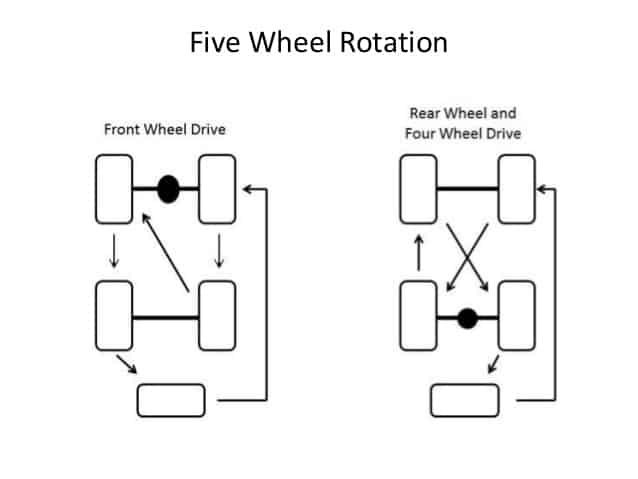
For a complete list of rules and recommendations for proper tire storage, see the article “How to store car tires”.
Well-known brands of imported tires, such as: Bridgestone, Michelin, Goodyear and Dunlop last up to 10 years or more from the date of manufacture, this period is generally accepted throughout the world. But the total shelf life and storage in the warehouse, from the date of issue, tires Continental is no more than 5 years.
Although, as we have already figured out, the storage conditions of tires mean a lot, not only new ones, but also those that were removed from the car until the next season.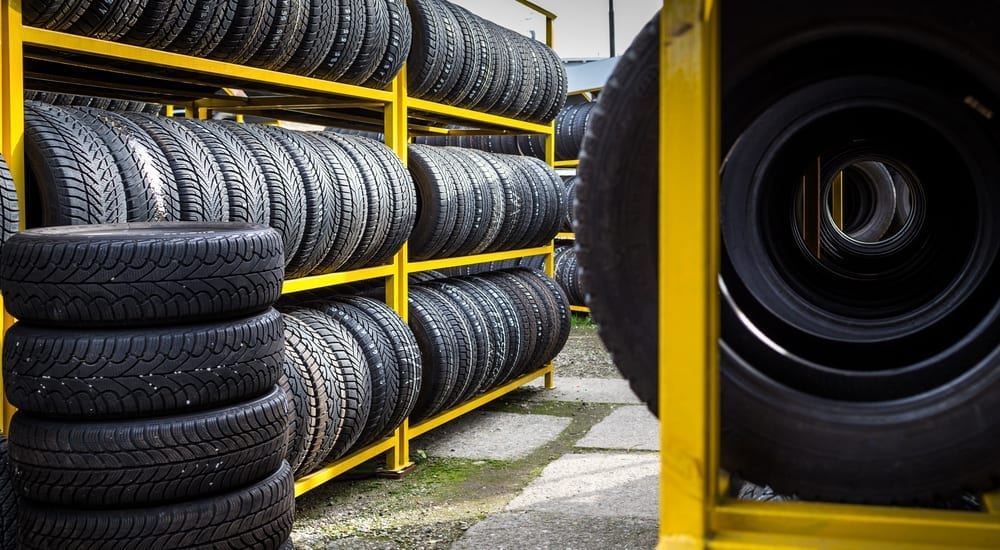 For example, nokian tire expiration date ranges from 3-5 years, subject to verification at least 1 time per year, after 5 years of use.
For example, nokian tire expiration date ranges from 3-5 years, subject to verification at least 1 time per year, after 5 years of use.
Unfortunately, the legislation does not establish the permissible storage periods for tires in a warehouse, but experts believe that a tire that has lain there for about 5 years is still equal to a new one.
The tire life of a vehicle is the length of time the manufacturer warrants the tires and is fully responsible for any defects found during use. According to manufacturers, tires should last at least ten years, although in practice they have to be replaced approximately every 5-6 years, in some cases even less.
There are many different factors that affect the wear of car tires, the main ones are listed below:
 Please note that depending on this parameter, there are certain norms for the mileage of car tires on the roadway:
Please note that depending on this parameter, there are certain norms for the mileage of car tires on the roadway: 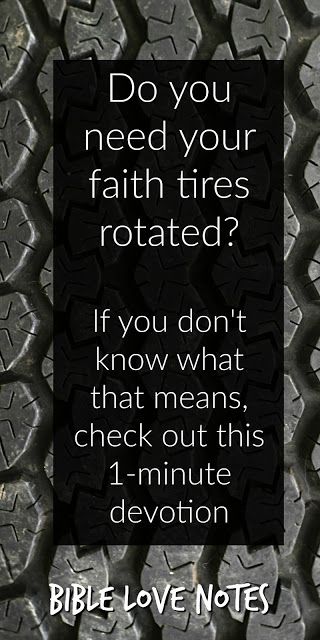 It is known that the service life of Chinese rubber is about two seasons, and branded rubber can last about seven years. When choosing tires, you need to pay attention to the manufacturer, because fakes are often sold under well-known brands.
It is known that the service life of Chinese rubber is about two seasons, and branded rubber can last about seven years. When choosing tires, you need to pay attention to the manufacturer, because fakes are often sold under well-known brands. Next, let's take a closer look at the instructions for certain actions that need to be performed in case of wear on car tires.
When diagnosing tires, in addition to the fact that it is imperative to pay attention to the degree of wear, there are also other equally important factors indicating the end of the service life.
In order to determine when the service life of car tires ends with a detailed inspection, you need to pay attention to the following points:
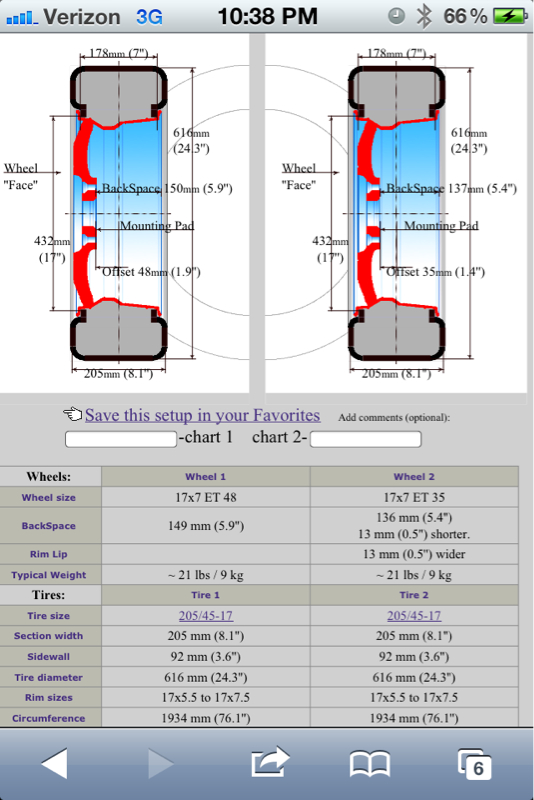 The degree of wear can be determined by eye or with the help of tools. On the outside, the tire surface has numbers with different depths, so you can easily determine the degree of wear. In order to measure the tread height, you can use a ruler with a special depth gauge. For summer tires, this parameter should be equal to more than 1.6 mm, in turn, for winter tires - more than 4 mm. If these parameters are less, then it is necessary to replace the tires. When the wear is uneven, then measurements should be taken in the area where the wear is most visible. Otherwise, if the tread edge is worn on only one side, then the camber-toe angle has been violated.
The degree of wear can be determined by eye or with the help of tools. On the outside, the tire surface has numbers with different depths, so you can easily determine the degree of wear. In order to measure the tread height, you can use a ruler with a special depth gauge. For summer tires, this parameter should be equal to more than 1.6 mm, in turn, for winter tires - more than 4 mm. If these parameters are less, then it is necessary to replace the tires. When the wear is uneven, then measurements should be taken in the area where the wear is most visible. Otherwise, if the tread edge is worn on only one side, then the camber-toe angle has been violated. 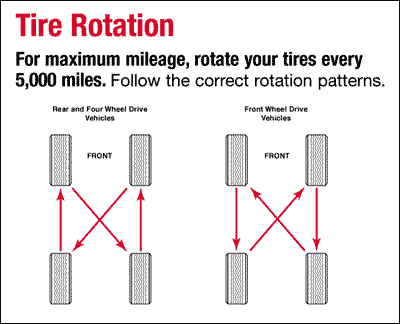 Also, such “hernias” can appear on the inside of the wheel, so you need to be extremely careful and inspect in time.
Also, such “hernias” can appear on the inside of the wheel, so you need to be extremely careful and inspect in time. When any defects were noticed in the tires, it is recommended to carry out a replacement, and not a rescue restoration, in order to somehow extend the period of use.
To prolong the life of car tires, it is necessary to periodically diagnose them.
In order to make your tires last longer, you need to follow certain rules of use:
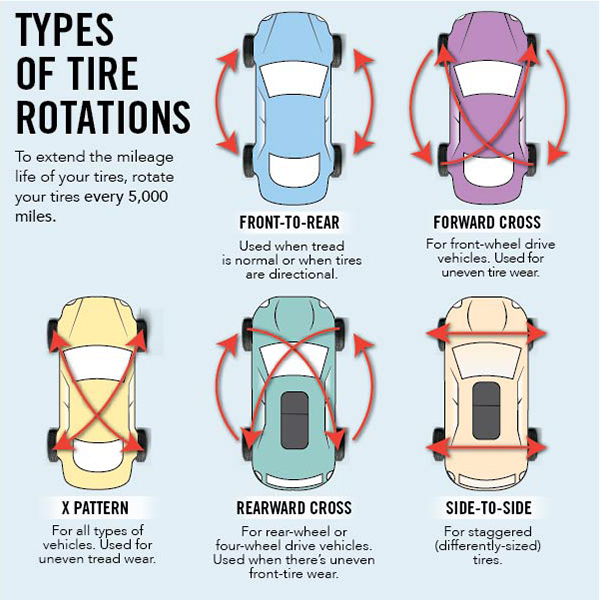 If the pressure is increased, then the wear also increases, but 2 times less than in the reduced one.
If the pressure is increased, then the wear also increases, but 2 times less than in the reduced one. Since there is always more wear on the front (driving) wheels, then every 10-15 times. thousand or at the time of changing seasonal tires, it is advisable to change it in places.
Swapping front tires to rear tires
Scheme of swapping 5 car wheels
Please note that although there are tires with a directional and non-directional pattern, you still cannot change the direction of rotation of the wheel. And in the second option, the front wheels must be reboarded before being installed back.
It is necessary to check if the tires are correctly installed in relation to the rims, which is usually indicated on the sidewalls of the tires, this is important, since if the tires rotate in the opposite direction to the design, all their performance will be significantly reduced in all modes of operation of the car.
Non-directional tire replacement scheme
All-wheel drive tire replacement scheme
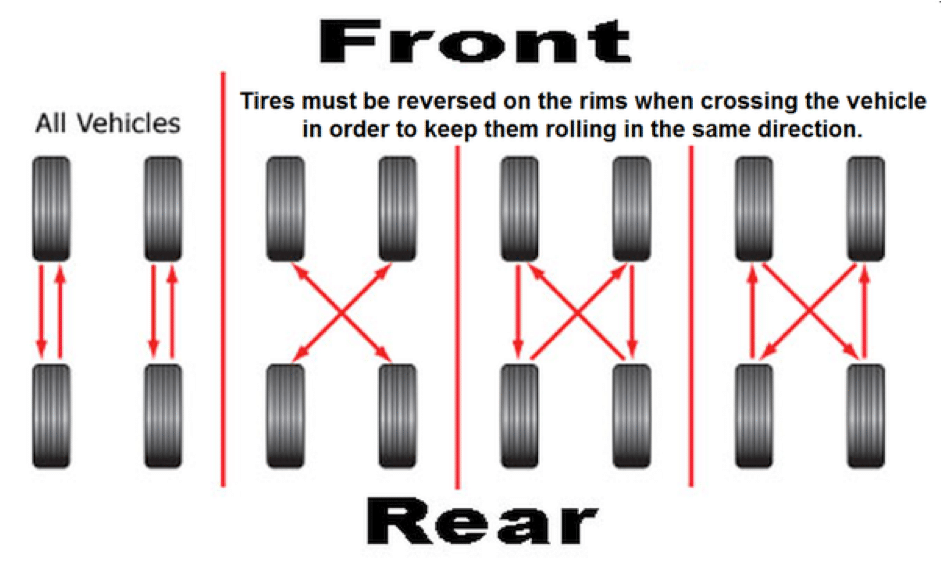

Experts recommend that you regularly check the condition of your tires, monitor the pressure and degree of tread wear. After all, it is much more profitable to fix a malfunction in the early stages than to change all the rubber later. It must be remembered that proper and timely tire care is your safety and guarantee of the durability of your rubber.
Many drivers will have their own opinion on this matter. Some will focus on the requirements of the law, namely the minimum tread depth. Others will say that tires should not be used for more than five years, after which the rubber loses its properties and becomes "wooden".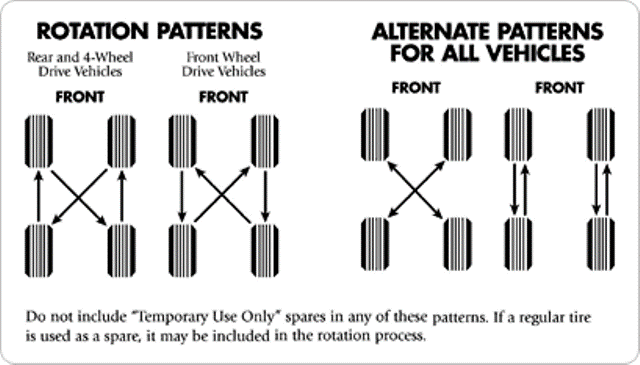 Still others will remember that they read about mileage limits ranging from 40 to 60 thousand kilometers. The fourth will operate only with the amount of money in the wallet.
Still others will remember that they read about mileage limits ranging from 40 to 60 thousand kilometers. The fourth will operate only with the amount of money in the wallet.
There is, of course, a very desperate group of motorists. These guys drive to the last and erase the "meaty" tires to the state of a racing slick. Well, individual adepts can be seen rustling spikes on the asphalt in mid-July.
How do you like the rear tires of this Mitsubishi Galant?Whose approach is correct? There is no definite answer, except that the latter pose a serious danger both to themselves and to other road users. Almost all the remaining methods have some logic behind them.
Driving with tires with less than the required tread depth is punishable by a fine. The police rarely pay attention to this, but it is worth keeping in mind the administrative responsibility. So, according to part 5 of article 590 of the Code of Administrative Offenses of the Republic of Kazakhstan, 5 MCI, or 13,890 tenge in 2020, will have to be paid to the treasury.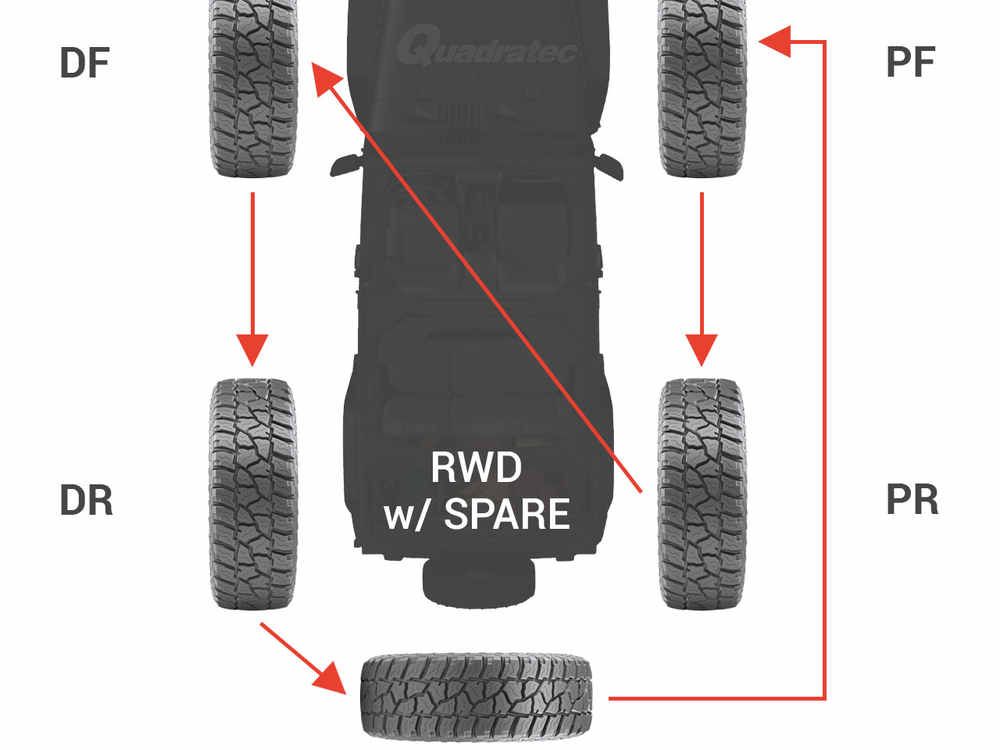 Repeated violation within a year increases the penalty to 20 MCI (55,560 tenge).
Repeated violation within a year increases the penalty to 20 MCI (55,560 tenge).
The minimum residual tread depth is specified in paragraphs 5.6.1 and 5.6.2 of Appendix No. 7 TR CU 018/2011 "On the safety of wheeled vehicles". The text says that for passenger cars, the balance must be at least 1.6 mm for summer tires and at least 4 mm for winter and marked with signs: M + S, M & S and M S.
Note that measuring the tread depth with a ruler is an extreme step. Almost all modern tires have special wear indicators. As soon as they appear, the rubber should be replaced.
The average life of almost all tires from major manufacturers is 7-10 years, depending on their seasonality. True, such a duration should be expected if a number of operational requirements are met. These include driving on high-quality roads with optimal tire pressure, correctly set wheel alignment angles and a normally working suspension.
Tire age can be found by a special marker.
The four digits enclosed in an oval (more often found on the inner sidewall) are the DOT marking, in a simple way, the production date. The first two digits indicate the week, and the last two indicate the year of manufacture.
Any of the above parameters can significantly reduce the life of the rubber. For example, with insufficient pressure in the wheel, the side parts of the tread will wear off faster, with high pressure, its middle part. Violations in the geometry lead to uneven tire wear.
The middle part of the tread is worn more. The reason may be an excess of pressure in the wheelHow and where the rubber is stored is also an important factor. Manufacturers recommend a dry, cool and dark room.
In Kazakhstan, you should not count on more than five years of operation. Nevertheless, one set of wheels can really drive for about ten years. Whether it's worth it is a completely different question. From personal (almost) experience: tires manufactured in one of the CIS countries served from mid-2008 to spring 2018. The annual mileage of the car was small, about 10,000 km per year, including sorties on light off-road. The rest of the tread after all this time would have allowed the same amount of travel, but when one of the tires was removed for repair (the wheel was regularly flattened), the landing board literally crumbled.
The annual mileage of the car was small, about 10,000 km per year, including sorties on light off-road. The rest of the tread after all this time would have allowed the same amount of travel, but when one of the tires was removed for repair (the wheel was regularly flattened), the landing board literally crumbled.
Another benchmark for tire replacement is mileage. There are often recommendations on the Web that refer to GOST. Their text says: for passenger cars with a carrying capacity of up to two tons, the service life of tires is 45,000 kilometers.
You can also find references to the operating mileage standards for vehicle tires approved by the Ministry of Transport of the Russian Federation. In them, the average service life varies from 40 thousand kilometers for Russian rubber to 60 thousand for foreign. Note that this document became invalid after the entry of the Technical Regulations of the Customs Union.
You can also determine how much a tire can run by using the Treadwear (TW) parameter, which indicates the tire wear index.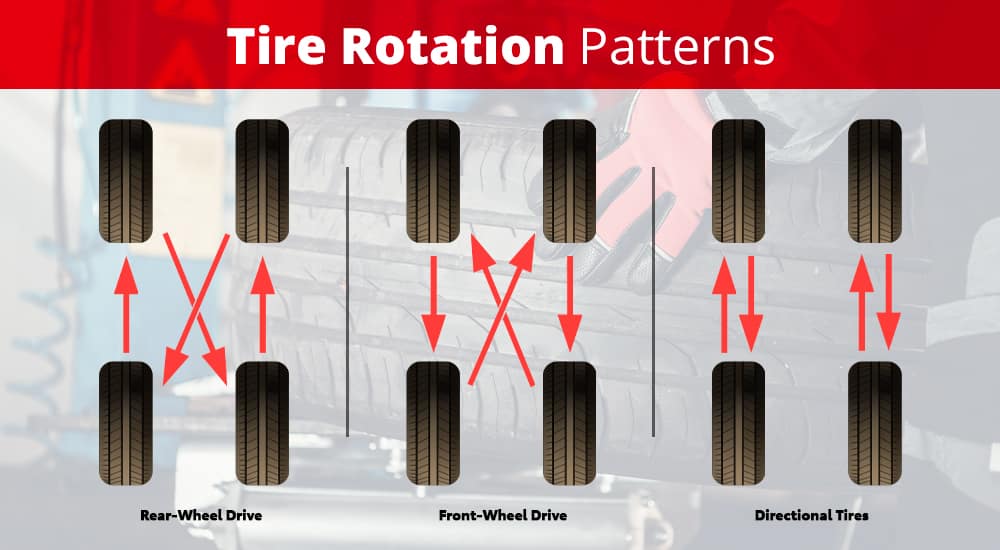 He rarely receives attention. This figure is usually of interest to those who plan to operate the car in a sports environment. Soft and, accordingly, tenacious rubber has a fairly low TW, which racers are guided by.
He rarely receives attention. This figure is usually of interest to those who plan to operate the car in a sports environment. Soft and, accordingly, tenacious rubber has a fairly low TW, which racers are guided by.
Surely you have a reasonable question about how the wear resistance index correlates with mileage. TW appeared thanks to the specialists of the National Highway Traffic Safety Administration (NHTSA). To calculate it, the tire at the test site is compared with a special sample, the TW of which is already known.
According to the methodology, the TW100 is equivalent to 48,000 mileage until the tires are completely worn out, that is, Nokian Hakka Green, for example, having a TW400, is capable of serving up to 192,000 kilometers. True, in the real world, wear is influenced by many factors that we talked about above, as well as driving style. Therefore, the results of calculations for TW are recommended to be divided by two. It turns out 96 thousand, or almost 5 years of operation, provided that in the warm season the car drives about 20 thousand kilometers.
In total, we have three parameters that should help with understanding how long tires will last if they are used correctly, and also tell you when to send a set of tires to the scrap and take care of buying new ones. This can be done on the Kolesa.kz portal using the search form in the "Spare Parts" section.
| | 5.5K 16
| | 36.